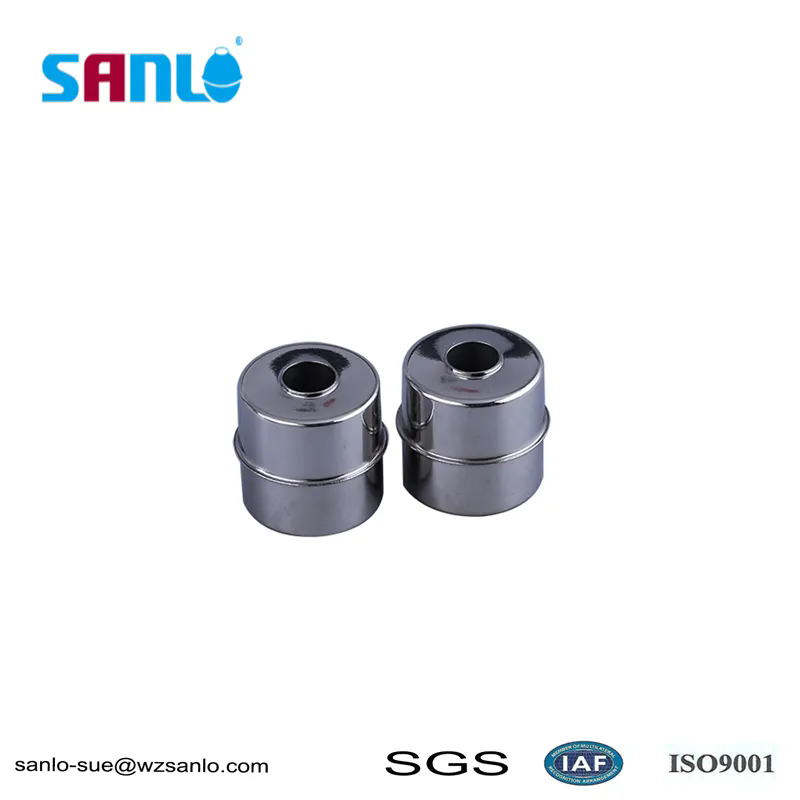What Is an Instrument Float and How Does It Work?
2024-12-10
In various industries, precision and accurate measurements are crucial to the success of operations. Whether in laboratories, manufacturing processes, or large-scale systems, instruments must function flawlessly to ensure the highest levels of safety, quality, and performance. One of the essential components that can play a significant role in maintaining precision is the instrument float. But what exactly is an instrument float, and how does it work? Let’s take a closer look.
1. What is an Instrument Float?
An instrument float is a type of floatation device or level sensor used in various industrial applications. It is designed to monitor or control the levels of liquids, gases, or other materials in a specific system. The float typically consists of a buoyant material that moves with the changing levels of the substance it is monitoring. This movement is then translated into a signal or action to inform operators or adjust the system accordingly.
Instrument floats are commonly used in systems where the precise level of a material must be monitored to ensure correct operation, such as in fuel tanks, water treatment plants, and chemical processes.
2. How Does an Instrument Float Work?
The basic mechanism behind an instrument float is quite simple. The float is buoyant, meaning it floats on the surface of the liquid or material being monitored. As the level of the liquid changes, the position of the float also changes. Depending on the specific type of instrument float, this movement can trigger a mechanical, electrical, or pneumatic response.
There are two primary categories of instrument floats:
- Mechanical Floats: These often use a lever or rod system where the float moves in response to changes in liquid level. This movement can activate a switch, valve, or other mechanical components to adjust the system.
- Electrical Floats: These utilize sensors or electrical components, such as reed switches or resistive sensors, to detect the position of the float. The float’s position is then translated into an electrical signal that can be monitored or used to control a process.
The data provided by the float can be crucial in preventing overflows, maintaining optimal fluid levels, or triggering alarms for system malfunctions.
3. Common Applications of Instrument Floats
Instrument floats are used across a wide range of industries due to their versatility. Some of the most common applications include:
- Water Treatment Plants: In water treatment facilities, instrument floats help to monitor the levels of water in various tanks, such as sedimentation tanks or filtration vessels. This ensures that the water treatment process is uninterrupted and maintains the necessary flow rates.
- Fuel Tanks: In fuel storage systems, instrument floats are used to monitor the fuel level. This helps to ensure that fuel tanks do not overflow and that the system operates efficiently.
- Chemical and Pharmaceutical Industries: Precise liquid measurements are critical in these industries for both safety and quality control. Instrument floats help to maintain proper levels in reaction vessels, storage tanks, and mixing chambers.
- Automotive Systems: Instrument floats are also found in car fuel tanks to measure fuel levels. The data is then sent to the vehicle’s dashboard display for the driver to monitor.
4. Types of Instrument Floats
There are several different types of instrument floats, each designed for specific purposes. The choice of float will depend on the type of liquid being measured, the required level of precision, and the environmental conditions. Some of the most common types include:
- Ball Floats: These are commonly used in smaller-scale systems, such as in toilets or small water tanks. The ball float moves with the liquid level and is often connected to a valve system to control the inflow or outflow of liquid.
- Bourdon Tube Floats: Used in more specialized applications, this type of float system converts the level changes into mechanical movement and often connects to gauges or control systems for real-time monitoring.
- Magnetic Floats: These are a more advanced type of float that uses magnets to detect the level of the liquid. The magnetic float is often more durable and suitable for high-pressure or corrosive environments.
5. Advantages of Instrument Floats
Instrument floats offer several key benefits in industrial applications:
- Simplicity: The basic float mechanism is easy to understand and maintain. This makes instrument floats cost-effective compared to more complex measurement devices.
- Versatility: Floats can be used in a wide range of applications, from water and fuel management to chemical processing.
- Reliability: As long as the float is properly maintained, it can provide consistent and accurate readings for extended periods.
- Safety: In applications like fuel tanks or chemical plants, accurate float systems are critical for preventing overflows or hazardous conditions, thus enhancing safety.
6. Limitations of Instrument Floats
Despite their advantages, instrument floats also have some limitations:
- Sensitivity to Viscosity and Density: The float may not work effectively in liquids with varying viscosities or densities. For example, thick liquids may cause the float to behave unpredictably.
- Maintenance: While they are generally reliable, floats can be prone to wear, corrosion, or damage in harsh environments, which may require regular maintenance or replacement.
- Space Constraints: In certain systems, the installation of a float may be challenging if there is limited space or difficult access.
7. Conclusion: Why Are Instrument Floats Important?
Instrument floats play an essential role in many industrial processes by providing accurate, real-time monitoring of liquid and material levels. Their simple yet effective design allows for easy installation and maintenance, making them a reliable solution in a wide variety of applications.
Whether you’re managing a large-scale water treatment facility, operating a fuel storage tank, or controlling a chemical reaction, the use of an instrument float can help ensure that your systems run efficiently and safely. So, the next time you see one of these humble devices in action, you’ll have a greater understanding of how they contribute to the precision and smooth operation of countless processes.



